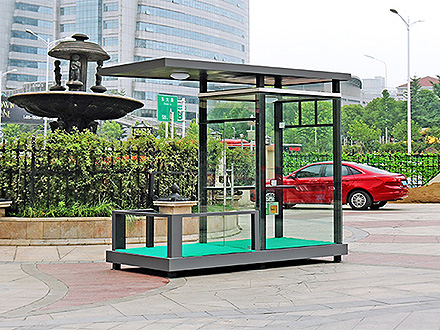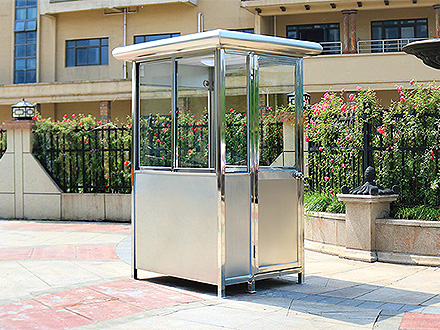Google has unveiled a system that attempts to pinpoint the location of where a photograph was taken by analysing the image, as the internet group continues to experiment with advanced “machine learning” technologies.谷歌(Google)发售了一套企图利用图像分析来精确定位照片拍摄地的系统,之后环绕先进设备的“机器学习”技术进行实验。Though at its early stages, the Californian company’s system is another example of how Silicon Valley groups are making giant strides in artificial intelligence, using the ability to crunch huge amounts of data and spot patterns to develop capabilities far beyond human brains.尽管这套系统仍正处于初级阶段,但它再度突显出硅谷(Silicon Valley)企业是如何在人工智能(AI)领域获得极大进展的。
人工智能是利用处置海量数据和借此识别出有模式的计算能力,来研发出有不亚于人类大脑的智能。Google’s latest experiment attempts solve a task that most humans find difficult: looking at a picture at random and trying to work out where it was taken.谷歌的近期实验目的已完成一项多数人都指出艰难的任务:网页一张随机得出的照片,然后分辨出有这张照片是在哪里摄制的。
Humans are able to make rough guesses on where a shot has been taken based on clues in the picture, such as the type of trees in background and the architectural style of buildings. This task has proven beyond most computer systems.人类需要根据照片上的线索——比如背景中树木的种类和建筑物的建筑风格——来对拍摄地不作大体的推断。这一任务已被证实远超过了大多数计算机系统的处置能力。
This week, Tobias Weyand, a computer vision specialist at Google, unveiled a system called PlaNet, that is able to decipher where a photograph has been taken by analysing the pixels it contains.本周,谷歌计算机视觉处置专家托拜厄斯韦安德(Tobias Weyand)公布了这个取名为PlaNet的系统。该系统可以通过分析照片中包括的像素来辨别出有拍摄地。“We think PlaNet has an advantage over humans because it has seen many more places than any human can ever visit and has learnt subtle cues of different scenes that are even hard for a well-travelled human to distinguish,” Mr Weyand told MIT Technology Review, which first reported the news.“我们指出PlaNet相对于人类享有一个优势,它所见过的地方比任何一个人有可能前往的地方都非常少,并且它掌控有所不同场景的微小线索,而即使是那些常常旅行的人也很难识别出有这些线索,”韦安德向《麻省理工科技评论》(MIT Technology Review)回应。这份杂志年所报导了这则消息。
His team divided the world into a grid containing 26,000 squares — each one representing a specific geographical area.韦安德的团队将世界区分为一个网格,其中包括2.6万个方格,每个方格代表一个明确的地理区域。For every square, the scientists created a database of images derived from the internet that could be identified by their “geolocation” — the digital signatures that show where many photographs are taken. This database was made up of 126m images.科学家们为这些方格创建了一个图片数据库,所有图片皆来自互联网、并以各自的“地理定位”(即表明照片拍摄地的数字签名)为标识符。
该数据库包括1.26亿张图片。Using this information, the team would teach a neural network — a computer system modelled on how layers of neurons in the brain interact — to place each image to a specific place.该团队将利用这些信息训练一个神经网络——仿真大脑皮层神经元交互的计算机系统——学会如何把每张图片对应一个明确的地点。
Mr Weyand’s team plugged 2.3m geotagged images from Flickr, the online photo library, to see whether the system could correctly determine their location.韦安德的团队用230万张来自在线图片库Flickr的包括地理位置标签的图片,来检验该系统能否准确辨别出有图片的拍摄地。Though this means it is far from perfect, this performance is far better than humans. According to the team’s findings, the “median human localisation error” — meaning the median distance from where a person guessed the location of a picture, to where it was actually taken — is 2,320.75km. PlaNet’s median localisation error is 1,131.7km.尽管结果表明该系统预想超过极致,但其展现出不亚于人类。
该团队的研究找到表明,“人类定位误差中值”——即一个人所猜中的拍摄地距确实拍摄地的距离的中值——是2320.75公里。PlaNet的定位误差中值是1131.7公里。
本文关键词:BB贝博艾弗森官方网站,艾弗森贝博ballbet官网,ballBET贝博BB艾弗森下载,贝博bb平台体育全站版
本文来源:BB贝博艾弗森官方网站-www.03j2.com






